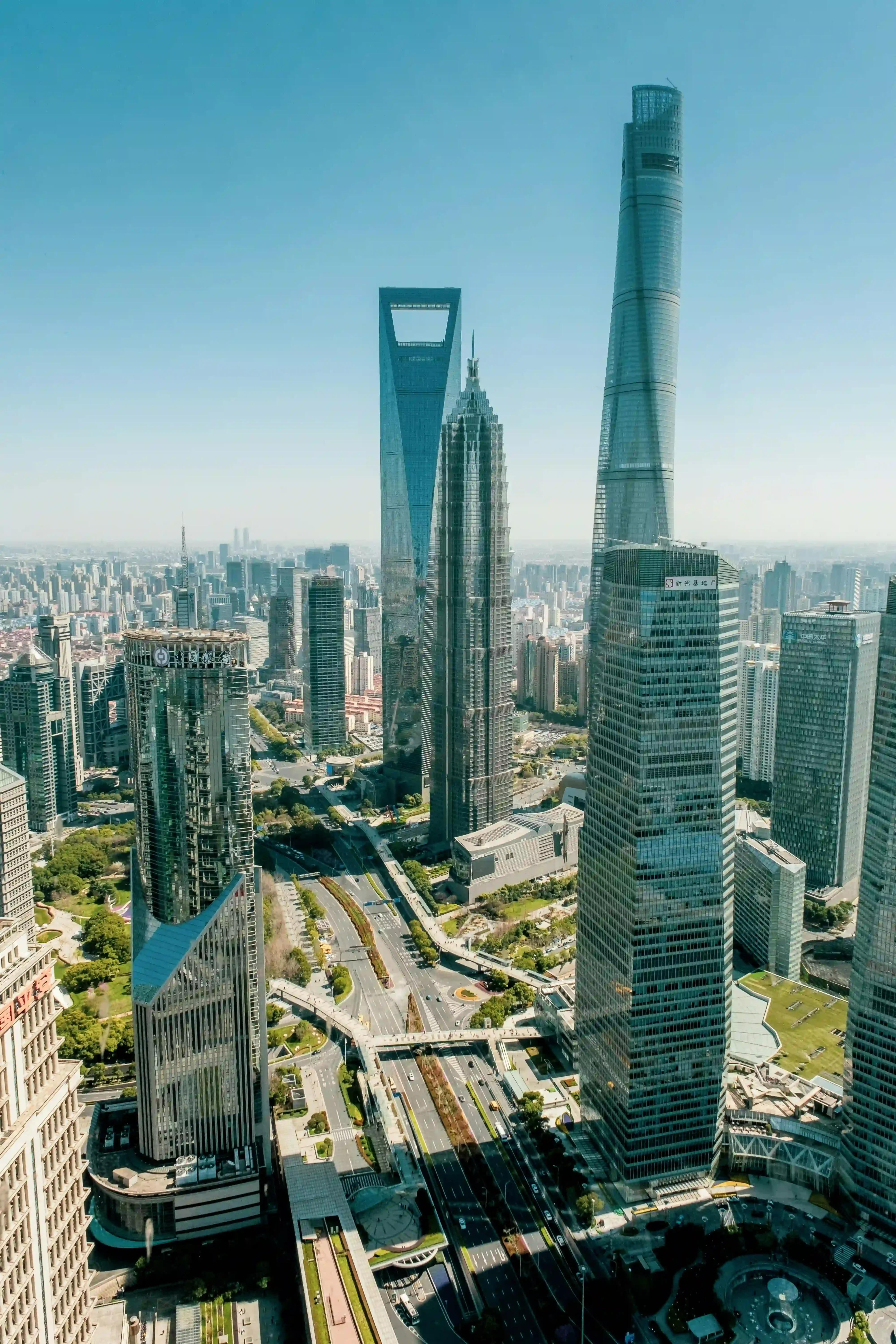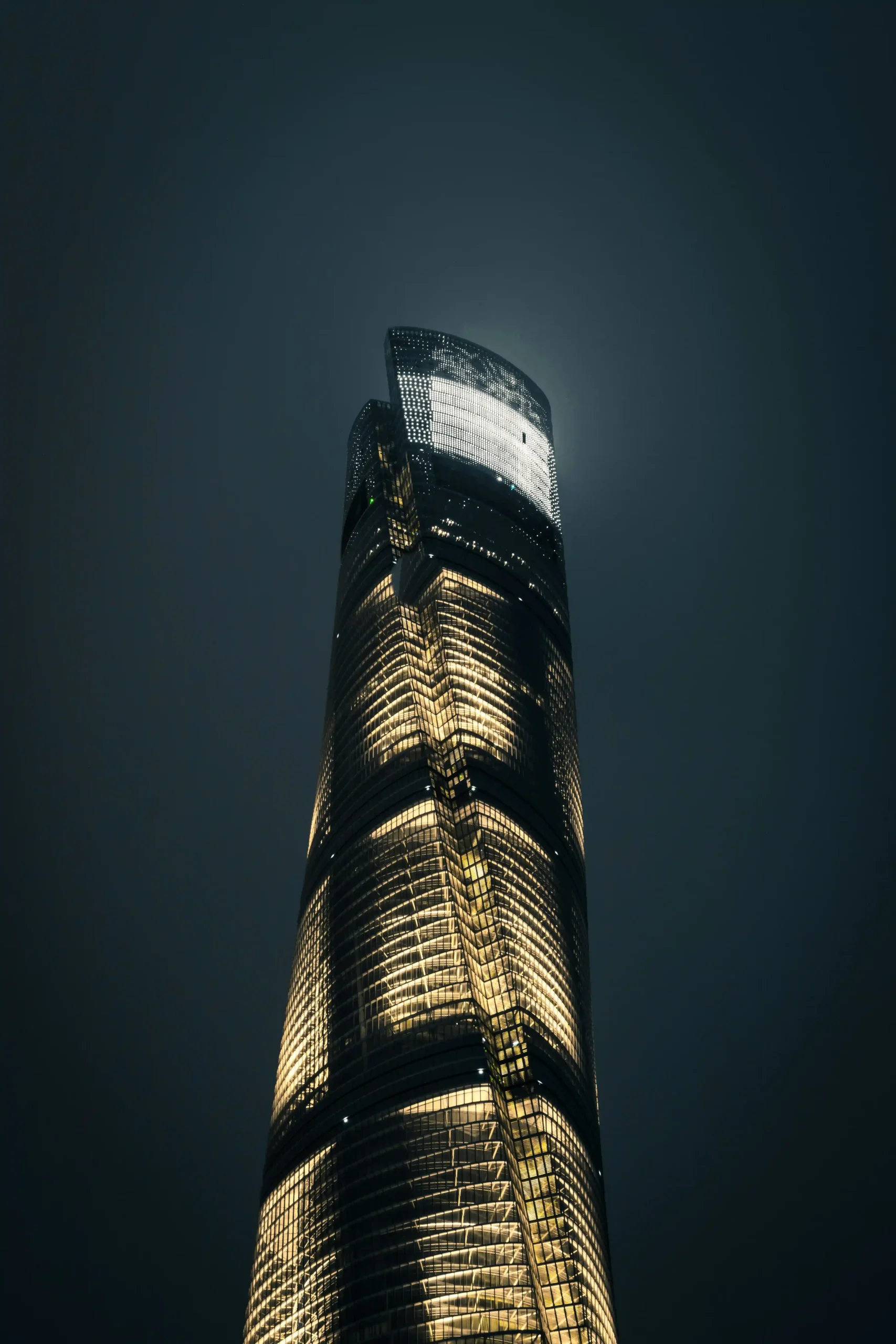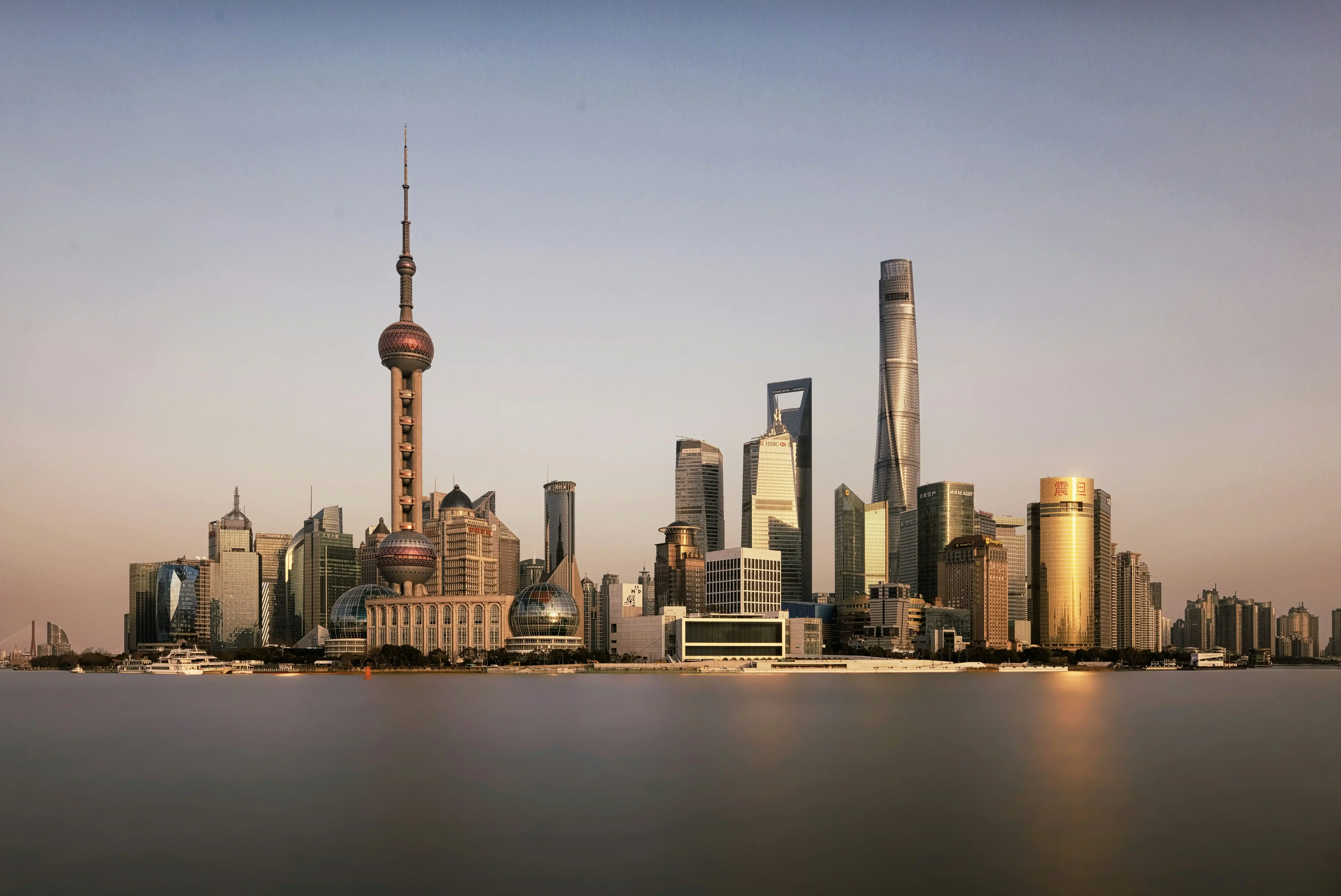Rising 632 metres (2,073 ft) above the historic heart of Shanghai, the Shanghai Tower stands as a testament to China’s economic might, architectural ambition, and forward-looking sustainability goals. Completed in 2015, this twisting megatall skyscraper redefined what was possible in supertall design and engineering, reshaping Shanghai’s iconic skyline alongside the Jin Mao Tower and Shanghai World Financial Center in the Lujiazui district.
While the world often marvels at the unmatched height of the Burj Khalifa or the luxury of the Burj Al Arab, the Shanghai Tower represents a different kind of superlative: a pinnacle of green technology, urban efficiency, and symbolic urban renewal for China’s largest city. It is a beacon of modern China’s blend of rapid growth with sustainable innovation.
Tower Stats
- Height: 632 m / 2,073 ft (3rd tallest building in the world, behind Merdeka 118 and Burj Khalifa)
- Floors: 128
- Total floor area: Approximately 380,000 m² / 4.09 million ft²
- Number of elevators: 106 (including the world’s fastest elevators, reaching speeds up to 20.5 m/s)
- Construction period: 2008–2015
- Construction cost: Estimated at US $2.4 billion
Architecture and Design
Designed by the global architectural firm Gensler, led by architect Jun Xia, the Shanghai Tower’s spiralling form is inspired by traditional Chinese scrolls and the natural twist of a dragon ascending into the sky — symbolizing strength, prosperity, and good fortune. The tower’s 120-degree twist reduces wind loads on the structure by approximately 24%, making it one of the most aerodynamically efficient skyscrapers ever built.
Its double-skin façade consists of an inner layer and a transparent outer layer that creates an insulating air space, helping regulate internal temperatures and reducing energy consumption significantly. This façade also functions as a weather shield and a series of vertical sky gardens connecting different parts of the building.
The tower is a mixed-use vertical complex, integrating high-end offices, retail spaces, conference centres, cultural venues, luxury hotels, and observation decks — essentially a vertical city under one roof.
Shanghai Tower embraces cutting-edge green technologies, including:
- Rainwater harvesting systems
- 270 Wind turbines installed near the top of the tower
- Geothermal energy systems
- Advanced energy management and monitoring
These innovations allowed the building to achieve LEED Platinum certification, making it the second-tallest building in the world to be awarded that rating, only second to the Merdeka 118.



Photos by Michael Held, Declan Sun, Daniel Chen, and Steven Wei on Unsplash
Hospitality & Amenities
The tower houses the J Hotel Shanghai Tower, which occupies floors 86 to 98. This ultra-luxury hotel offers floor-to-ceiling windows with sweeping views of the Huangpu River and the entire Shanghai skyline.
Key amenities include:
- State-of-the-art spa and wellness facilities, along with a swimming pool on the 84th floor
- Multiple fine dining restaurants blending local and international cuisine
- Sky lobbies designed for events, social gatherings, and business functions
- Ultra-high-speed elevators that transport guests from ground to observation deck in under one minute
Tourism Magnet
Since opening, the Shanghai Tower has become a major tourist destination. The highest level of the official observation deck, located on the 121st floor, is tied for the highest in the world alongside the Ping An Finance Center, offering panoramic views across the city and beyond. Visitors can enjoy interactive exhibits that explain Shanghai’s history and the engineering specs of the tower.
Public areas, retail outlets, and landscaped sky gardens encourage visitation year-round, blending urban life with leisure and tourism.
Economic Ripple Effect
Shanghai Tower has reinforced the Lujiazui financial district’s status as a global financial hub, attracting multinational corporations and luxury retailers. It has spurred additional developments in the area, including residential towers, malls, and entertainment venues.
The building symbolizes China’s rapid modernization and leadership in sustainable architecture. It has influenced skyscraper design globally and played a key role in boosting Shanghai’s economic and cultural prominence.


Photos by Michael Held and Haugenzhays Zhang on Unsplash
Engineering and Construction Challenges
Foundation and Structure
Building on Shanghai’s soft river delta soil required a deep and sturdy foundation. A large excavation pit, about 121 meters in diameter and 33 meters deep, was dug for construction. Nearly 1000 concrete piles, each about one meter in diameter and 52 to 56 meters long, were driven into the ground to reach stable soil layers. A six-meter-thick concrete raft slab was poured on top, connecting the piles and distributing the building’s load evenly. This piled raft foundation provides the necessary strength and stability for the tower.
Wind and Seismic Resistance
The twisting design was critical to reducing vortex shedding caused by strong winds, cutting wind load by about 24% and minimizing building sway. Advanced seismic dampers and base isolators were installed to protect against earthquakes.
Double-Skin Façade
The innovative façade acts as a thermal buffer zone, reducing heating and cooling demands by up to 30%. It also incorporates multiple sky gardens — providing outdoor spaces within the building and improving air quality.
Fastest Elevators
The Shanghai Tower contains 106 elevators, including double-deck high-speed elevators, some reaching speeds of 20.5 m/s (74 km/h, 46 mph) — the fastest elevators in the world.
Fun Facts
- The Shanghai Tower is the third tallest building in the world, behind the Merdeka 118 and Burj Khalifa.
- It features the world’s highest observation deck in a building, tied with the Ping An Finance Center, at 562 meters / 1,483 ft.
- The building’s spiralling form is inspired by a Chinese dragon, symbolising strength and good fortune.
- The tower’s façade creates one of the world’s largest indoor climates — essentially a vertical park in the sky.
- It is also one of the largest buildings in the world by floor area
Cultural Legacy
Shanghai Tower represents more than just architectural achievement — it’s a symbol of China’s ambition, innovation, and commitment to sustainable urban development. It bridges Shanghai’s rich cultural heritage with its future as a global financial and technological centre.
Just as the Eiffel Tower is synonymous with Paris and the Burj Khalifa defines Dubai’s skyline, the Shanghai Tower stands as a striking symbol of modern China — a twisting landmark that embodies the country’s rapid rise and bold vision for the future.

